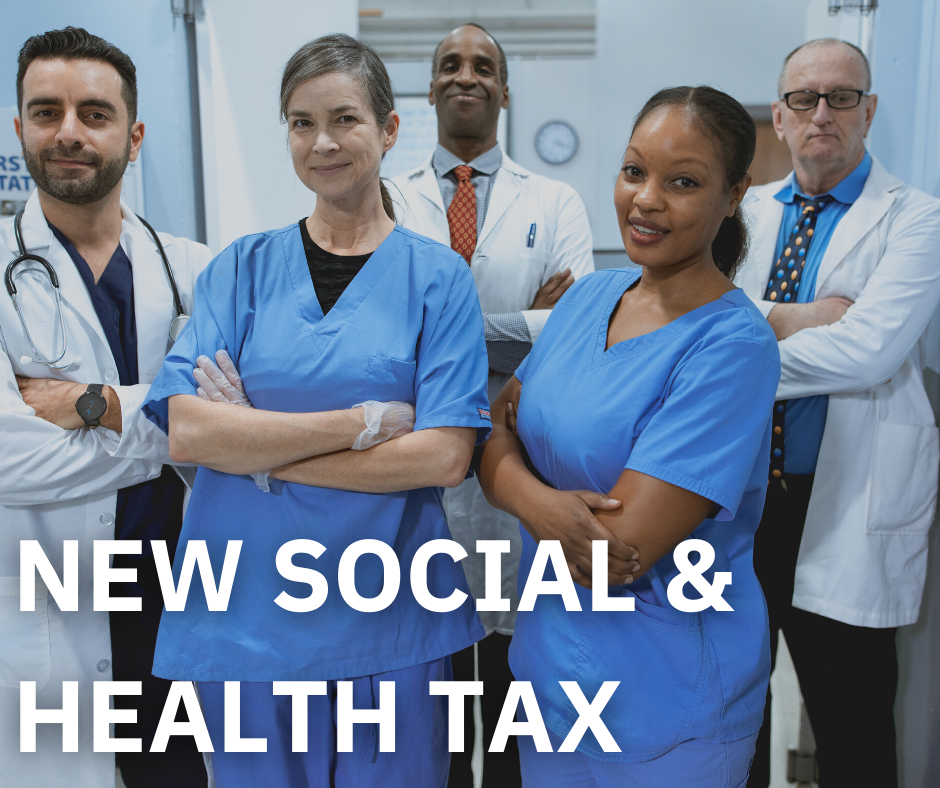The improvements are partially funded by a hike in dividend tax rates. Before the establishment of a separate Health and Social Care Levy, there will be a temporary rise in National Insurance.
For more information on the National Insurance rise, read our blog post, “National Insurance tax raise for health and social care reforms”.
These changes are likely to affect you whether you're an employee, an employer, or self-employed.
What is the health and social care tax levy?
Employees, self-employed people, and employers will pay a 1.25% tax on their earnings. It will tax profits in the same manner as National Insurance contributions (NICs) are taxed, with the exception that it will also apply to people above the age of state pension. It will take effect in the tax year beginning April 2023.
All three NIC rates will increase by 1.25% in April 2022, before the levy is implemented. This has the same impact as the tax, except it does not apply to wages made after reaching the age of state pension. When the tax takes effect in April 2023, NIC rates will revert to their present levels, as shown in the table.
How much will the new taxes raise?
The government expects that the new measures will collect £12 billion per year on average: £11.4 billion from the levy and £0.6 billion from the increased dividend tax rate.
Higher employer NICs are likely to lower future pay gains and corporate profits, reducing total tax collections by £3.2 billion each year, according to the forecast of how much the levy will raise.
The levy will be "hypothecated in law to health and care," according to Boris Johnson. A hypothecated or ring fenced tax is one in which money is set aside for a specific purpose.
This pledge was made by the prime minister to emphasise that the £12 billion earned by the tax will be used to pay increases in health and social care spending.
On the contrary, the amount of money spent on health and social care in a particular year is unaffected by the amount raised by the new levy. While the tax is predicted to earn £12 billion per year, total health and social care spending in England is estimated to be around £235 billion per year, with the difference filled by part of the government's other nearly £800 billion per year in revenue.
It is important to note that money can be spent on any of the government-funded public services or social security.
While the levy's funds are supposed to go to the NHS and social care (and stating this connection makes the new tax easier to sell to the public), the government could just as easily say that capital gains tax or vehicle excise duty revenue would go to the NHS, and the economic reality would remain the same.
How will I pay the new tax?
The fee will be applied based on how you report and pay national insurance and dividend tax. In other words, the mechanism for paying National Insurance and dividend tax (and now the new fee) will remain the same, but the rates will alter.
PAYE will be used to administer the levy to both businesses and employees. Employers deduct the amount from employees' earnings and pay it to HMRC together with their own employer payments on their behalf.
Self-employed persons, as well as anybody paying the levy in addition to dividend tax, will pay it through their Self Assessment tax return.
Taxation can be confusing and stressful for many businesses and individuals. The new tax levy may be another burden on your finances but we can offer your business remote accounting services to simplify your business needs overall.
For more information on our services or for any accounting queries, please contact Persona Finance at [enquiries@personafinance.co.uk].



